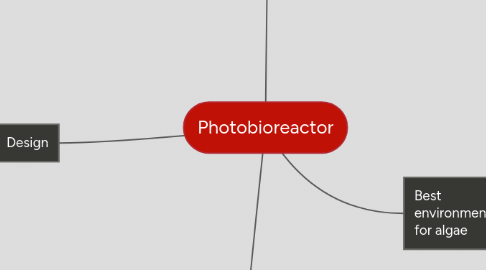
1. Design
1.1. One-way glass
1.1.1. SCRATCH (with light it wont work)
1.2. glass box
1.3. mirror on bottom??
1.4. Box within box
1.4.1. Water and algae in box
1.4.2. Black box outside
1.4.2.1. Wood?
1.5. Solar panels
1.5.1. power LED lights when storming/night/cloudy/etc.
1.5.1.1. LED lights on the sides shining red/yellow and blue light
1.5.1.2. LED lights in water to light algae inside
1.6. Rotating arms
1.6.1. Rotates layers of algae so the top doesnt get too much sunlight and the bottom doesnt get too little
1.7. Lid
1.7.1. Stops overflow during storm
1.7.2. Transparent Plastic???
1.7.3. Blocks microorganisms from coming in
1.8. pH sensor???
1.9. Solar water heaters
1.9.1. Active, or forced-circulation
1.9.1.1. use electric pumps, valves and controllers to move water from the collectors to the storage tank
1.9.2. Passive
1.9.2.1. Natural convection moves water from the collectors to the storage tank as it heats up
1.10. transparent conductor
1.10.1. Not transparent but metal (replaces mirror)
1.10.1.1. Silver (429 watts per meter per degree Kelvin)
1.11. Cylinder
1.11.1. Rotate???
2. Material Cost
2.1. Solar Water Heater
2.1.1. PRICEY 20$ to 15,000$
2.1.2. Decent ones for 500$
2.2. Glass
2.2.1. Expect to pay: $450 to $500 per square metre for 6mm toughened glass
2.3. Rotating Arm
2.3.1. Negotiable???
2.4. Black Box
2.4.1. Depends on size
2.5. pH sensor
2.5.1. 7$ - 200$
2.6. LED lights
2.6.1. 15$
2.7. Solar panels
2.7.1. >80$
2.8. ALL DEPENDANT ON SIZE AND QUALITY WANTED
3. Algae Type
3.1. Best to make biofuel
3.2. Chlorella
3.2.1. Different strains
3.2.1.1. CH2 strain makes 80 tons of biomass per year and 22 tons of lipids per year
3.2.2. Best conditions
3.2.2.1. 30 degrees it grows best but can grow in temps up to 35 degrees
3.2.2.2. Fresh Water
3.2.2.3. 10%-15% CO2
3.2.2.4. pH of 3
3.2.2.5. tolerate up to 200 ppm of NOx and 50 ppm of SOx
3.2.2.6. 400-500 nm (blue) and 625-675 nm (red)
3.3. Nanochloropsis
3.3.1. 60-70% overall biomass as lipids
3.3.2. 30% dry weight as lipids
4. Best environment for algae
4.1. Light
4.1.1. Too much and it'll die
4.1.2. Depends on type of algae
4.1.3. Rotating Arms
4.1.4. Yellow and Blue light alternating leads to four-fold amount of lipids
4.1.5. algae grows better in blue and red light because they contain chlorophyll a and b
4.2. Temperature
4.3. CO2
4.4. Water
4.5. Nutrients
4.5.1. Nitrogen
4.5.2. phosphorus
4.5.3. potassium
4.5.4. silica and iron
4.5.4.1. the lack of them in aqueous environments can lead to stunted rates
4.6. pH
4.7. Flue gas toleration
4.7.1. ppm = Parts per million
4.7.2. NOx = nitrogen oxide
4.7.3. Sox = sulphur oxide
4.7.4. Flue gas is the gas exiting to the atmosphere via a flue, which is a pipe or channel for conveying exhaust
